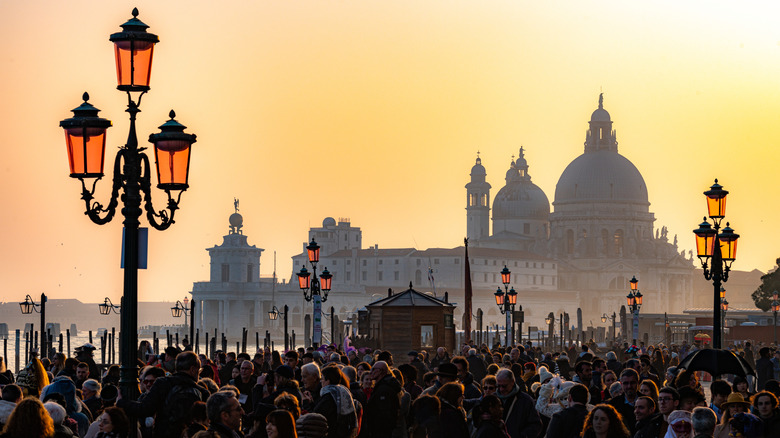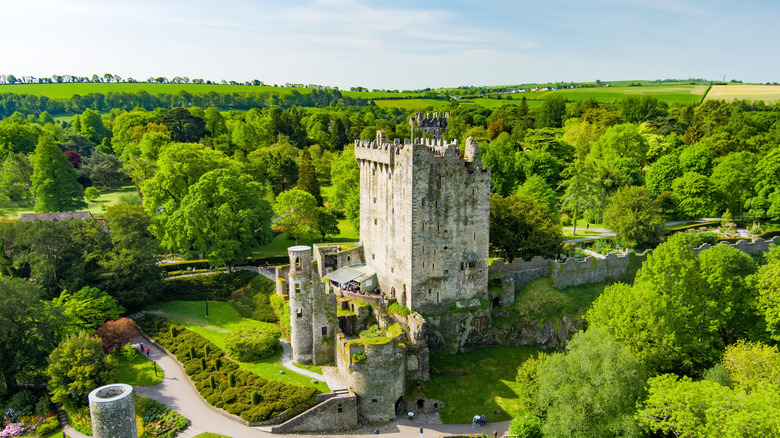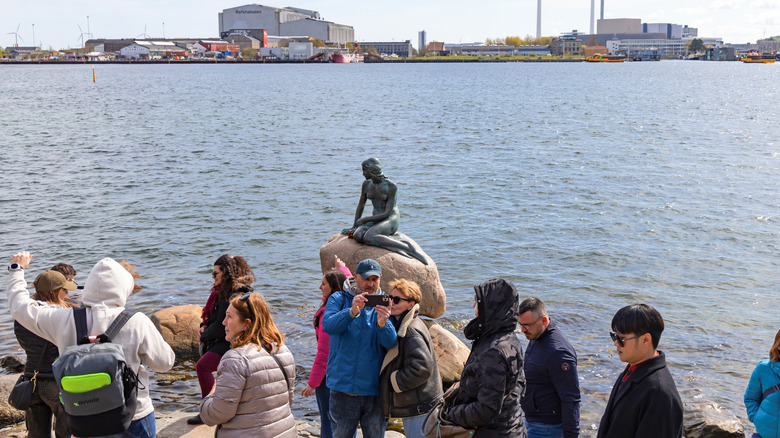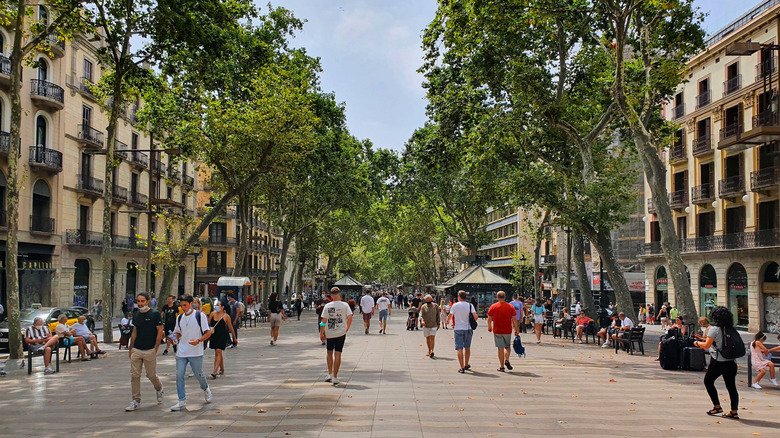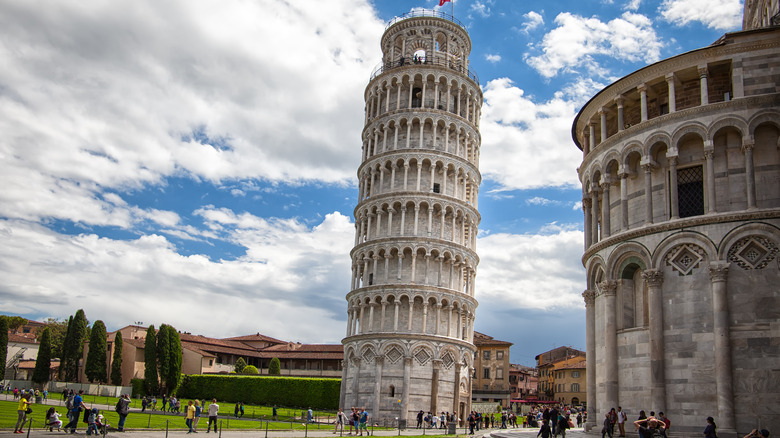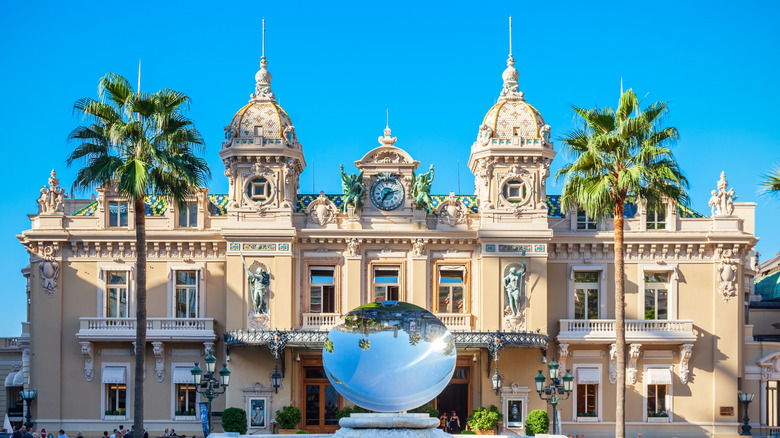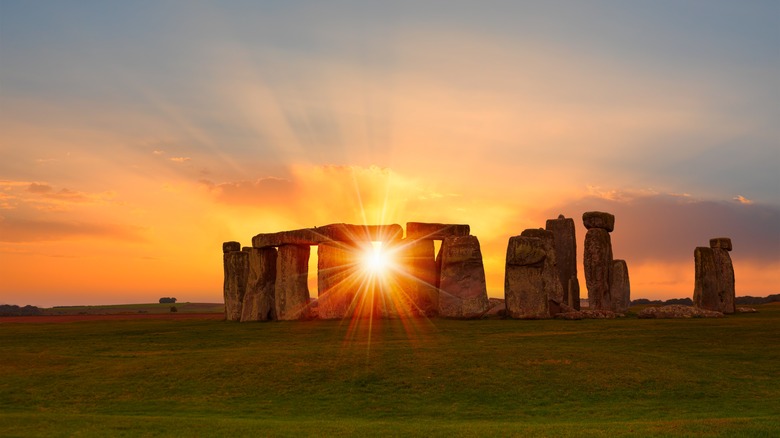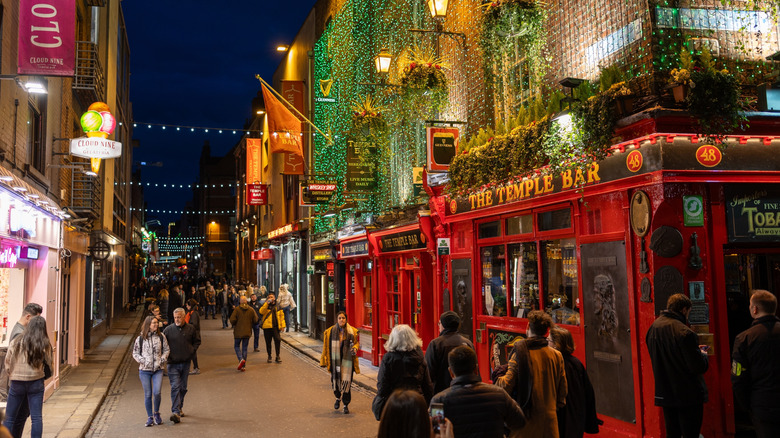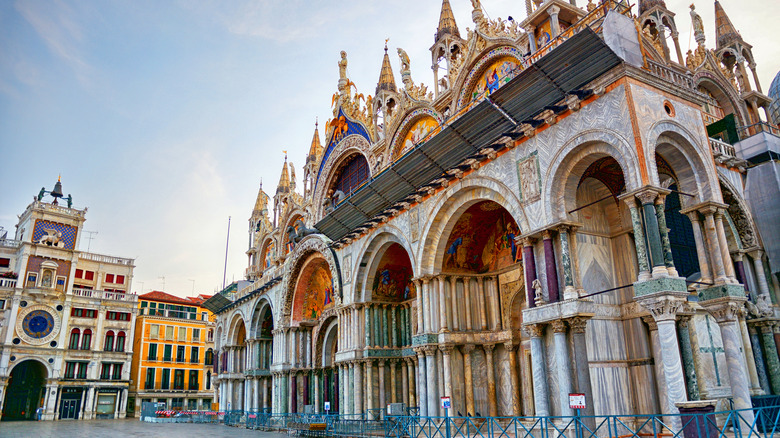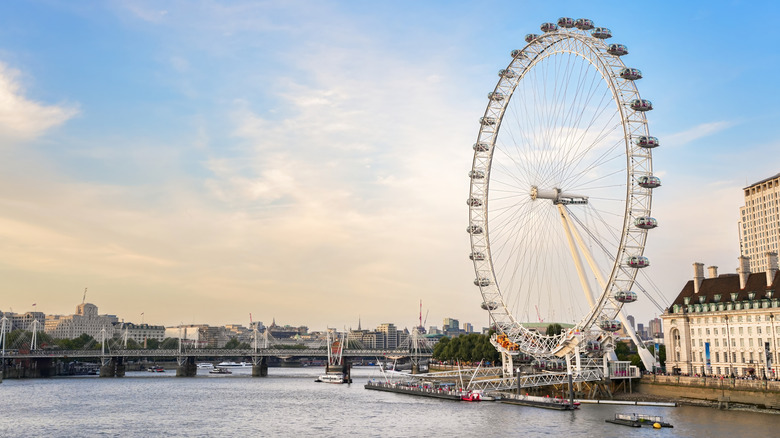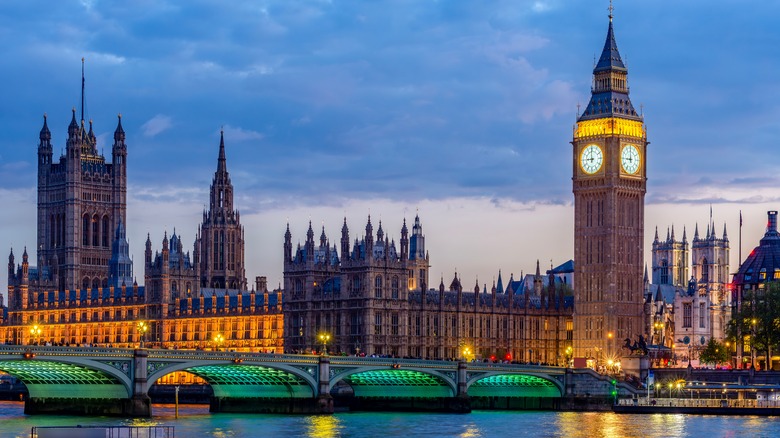The 10 Most Overrated Tourist Attractions To Avoid In Europe (And Where To Go Instead)
Europe attracts over half a billion visitors every year. However, this popularity comes at a cost: over-tourism has hit many of the top destinations, leading to overcrowding, infrastructure strain, and a worse experience for travelers and locals alike. Drawing on their years of experience traversing Europe, Explore writers Daniel Feininger and Ian Jackson have identified which tourist hotspots you might want to skip — and provided thoughtful alternatives.
Dan: European travel is a major privilege. The continent holds so many treasures that await discovery, and many of them hold a kind of personalized, historical significance for Americans. I've had the pleasure of traveling throughout Europe while living abroad for the last decade. Both the U.K. and now Ireland have been European homes to me. Numerous visits to some of my favorite destinations have also colored my perception of a few key tourist attractions that frequently sit atop the must-do lists of eager travelers. Unfortunately, not all attractions hold the allure in person that they promise on the page.
Ian: As a child, a trip down the coast to Wales was considered an exotic venture. But then came divorce, second marriages, and competition for my affection. A camping trip to Tuscany with my father became an annual treat; gastronomic tours of Southern France were quite the norm. I'd wander around ancient bazaars in Istanbul, try to flirt with girls in Pécs, and use pocket money to create adventures of my own. If there is such a thing as a travel bug, I caught it during those late teen summers. I wanted to swim in every ocean, set foot upon every continent. I've still not been to Antarctica. But I picked up a trick or two along the way.
1. Kissing the Blarney Stone in Cork
Dan: The Blarney Stone sits at the top of the Blarney Castle remnants in a Cork town of the same name. A fortification has been at this site since the 10th century, and the oldest components of the stone structure found at Blarney today date back to around 1210. All of this adds an allure to the area that mystifies and commands attention. Blarney Castle is fairly well preserved and a visit to the site won't grant you access to just the keep, but to the gardens that surround it, making for a peaceful day out in Ireland's often-stunning southwest.
The town is charming and the castle grounds are admittedly a tranquil visit that I can't entirely recommend skipping. However, the main draw for tourists planning a visit is absolutely worth reconsidering. Kissing the Blarney Stone that sits at the top of the castle is a longstanding tradition. However, the experience is, in a word, underwhelming. There's also a common rumor that locals have been known to urinate on the site. As far as I can tell, it's just something that people say and not actually a thing people do.
Instead, head north along the Wild Atlantic Way for some incredible sightseeing opportunities and take a day in either Killarney National Park in Kerry or Bunratty Folk Park in Clare. Both feature intact castles with even more interesting surrounding areas. In Killarney, you'll be out in the glorious natural surrounds of Ireland, while Bunratty features a Folk Park with plenty of antique treasures (along with Durty Nelly's, a pub standing alongside both the Ralty River and the castle since 1620).
2. The Little Mermaid, Denmark
Ian: Copenhagen is one of the friendliest cities to visit in Europe. The city's harbor is clean enough to swim in, and fish caught in its waters often find their way to the plates of some of the world's very best restaurants. Although there are etiquette skills to master before your visit to Copenhagen, the welcome you receive will likely be warm. Just don't expect much from the Little Mermaid statue.
The story of the mermaid who dreamt of becoming a human was penned by Hans Christian Anderson and published in 1836. The statue arrived posthumously, in 1913, commissioned in celebration of one of Copenhagen's most favored sons. And then, in 1989, Disney released an animated movie of the same name. Chaos ensued. Tourists began to flock to the harbor in the hopes of having their picture taken with the now much-loved character. Alas, she simply wasn't designed with such attention in mind. Standing a mere 49.2 inches tall — and in a location that guaranteed queues — many who have braved the rocks to pose alongside her left feeling cheated.
Grabbing a postcard of the icon and heading to Tivoli Gardens is a much better use of your time. Opened in 1843 as a way to keep local minds off politics, when Walt Disney visited many years later, he was so impressed that he decided to build a theme park of his own. There are rides to enjoy, but you'll also find live entertainment, lush gardens, and gourmet dining. It's gorgeous and twinkly at night, and during yuletide, it transforms into one of Europe's best Christmas markets.
3. Walking along La Rambla in Barcelona
Dan: La Rambla is one of the main tourist-focused thoroughfares in Barcelona. The road is a major walking area, with a central strip running all the way along its path between two small roadways on either side. Along the edges, you'll find all kinds of restaurants, shops, and bars. Within the central walking lane, vendors set up shop to offer tourists an abundance of goods.
The walkway is a haven for tourists looking to explore a big ticket item on their trip to the Catalonian capital, but this also makes it the unfortunate target of pickpockets lurking in the background. It's certainly a beautiful spot, but walking along La Rambla, I've spotted more than a few bad actors scoping out potential marks and even following people in an attempt to snag their phones, purses, or other expensive belongings. None of this is to say that La Rambla is a place you should actively avoid, however. It's a great way to traverse this particular part of the city, especially if you're staying centrally and want to work your way down to the marina. But staying alert is key, and looking for alternatives to do your touristy wandering is a must.
Fortunately, the alleyways that branch off to the sides of this major diagonal offer an abundance of squares and hole-in-the-wall spots that are well worth a visit. One major highlight is Mercat de la Boqueria. Getting off the main tourist lane with even a street or two of clearance brings you back into the territory of local pricing and a potentially safer overall atmosphere when it comes to your belongings.
4. The Leaning Tower of Pisa, Italy
Ian: Forced perspective is a camera technique that involves placing different objects at different distances to distort their apparent size. Harold Lloyd didn't really climb that building in "Safety Last!", and no, you're not holding up the Leaning Tower of Pisa. Pisa is an ancient city in northwest Tuscany situated approximately 17 miles from Livorno, which is itself a coastal Italian gem of crystal waters and spas. Construction of the now-infamous bell tower began in 1173, but it was not completed until 1372.
Today, thanks to some rather ingenious civil engineering, the tower is stable. Alas, with over 5 million annual visitors all trying to take variations of the same picture, it's also too crowded to appreciate. The queues for climbing its stairs are absurd; 200 visitors an hour is the maximum allowed. And Pisa is far from the jewel of the Tuscan North. Florence is just 50 miles distant, and while all of its buildings maintain a traditionally perpendicular approach to their construction, they are better for it.
Florence was the cradle of the Renaissance, the city that gave us Michelangelo, Leonardo da Vinci, and Botticelli. A sunset cruise across the Arno River is a magical experience. A visit to the artisan district is a revelation. The Uffizi Gallery is beyond world-class, and the architecture is the equal of Venice. Trattorias abound, offering genuinely unforgettable experiences. And then there is the cathedral of Santa Maria del Fiore. Dating all the way back to 1296, its stunning cupola is of 15th-century vintage. The largest brick dome in the world, its sheer magnificence easily eclipses the outline of Pisa's most famous snafu.
5. Trying your luck at Casino De Monte-Carlo in Monaco
Dan: Monaco is a unique visit. The microstate doesn't feature an airport of its own, so getting there typically requires a car rental or a train from a destination like Nice to the west or Genoa to the east. Monaco commands a tiny strip of shoreline within the larger French Côte d'Azur measuring roughly 0.75 square miles in total. The state's opulent atmosphere is well worth a visit. A day trip will involve wandering around the city's mega-yacht-filled marinas, parks teeming with flowering beauty, and the roads of a particularly tricky Formula 1 circuit that help make the community famous.
When I visited in 2019, I spent time immersed in all these things, but stopped at one other place in particular. Near the Japanese garden and just above the iconic Tunnel Larvotto stands the Casino De Monte-Carlo. It's an opulent establishment clamoring for attention among a wash of other fantastical structures and landscapes. There's no denying the magnetism of the casino's regal frame, but visitors shouldn't expect to walk into a scene straight off the silver screen. The primary experience for a tourist looking to head into the casino is its slots floor.
A much better alternative is to take in the casino, but to make it one stop among a range of sightseeing points, such as the cathedral, the Private Cars Collection of HSH Prince of Monaco, and those mentioned above. Outdoor bars near the Palais Princier or the Grimaldi Forum are a luxurious and relaxing way to unwind before catching your return departure.
6. Stonehenge, United Kingdom
Ian: Stonehenge is not the oldest stone circle found in Europe by any means. Several unique islands off the coast of Scotland have ruins that are far older. Still, the ancient circle is perhaps the most famous Neolithic monument in the world. The Victorians thought it was an ancient Druidic temple, a place to take pictures and picnic at. To them, dating the stone circle was an impossible task. Some thought it might have been built as early as 500 B.C.E. Others thought it was of Roman construction. However, activity has been dated back to at least 7000 B.C., and the menhirs we see today were dragged into place over four and a half thousand years ago.
The days of wandering through the stones and pressing palms against literal history are long gone. Fiercely protected, direct access is restricted to four times a year during the winter and summer solstice and equinox celebrations. Those visiting on any other day are in for a disappointment. The place is almost always crowded and filled with tourists trying to get selfies of themselves standing before the mighty monument. Barriers prevent any close approach, and the visitor center is a little overpriced.
Meanwhile, Avebury Henge is just 24 miles distant from its more famous brethren. You can walk freely among the circle of stones, which, at over 1,000 feet in diameter, makes it the largest neolithic structure of its kind in the world. Hikes to the nearby enigma that is Silbury Hill come highly recommended. Oh, and entry is free.
7. Drinking in Dublin's Temple Bar neighborhood
Dan: Temple Bar is a hot spot when it comes to Dublin nightlife. Tourists often flock to the riverside stretch of bars when heading out and about in the Irish capital. It's centrally located for those coming to Dublin to explore the city's history, adding to the popularity, surely. On one side, you'll find Trinity College and magnetic tourist attractions like the college's library, the Book of Kells, and the Molly Malone Statue. Heading north across the river, the GPO stands just up O'Connell Street and is a must-see site of Irish revolutionary history during the Easter Rising in 1916. At the other end of Temple Bar, you'll find Dublin Castle and Christ Church Cathedral.
Prices in Temple Bar are notoriously high, made even worse by the reality that Dublin is known to be an expensive night out as it is. There's also a crush of people to deal with, and crowds tend to make for a sour pint of the black stuff since patience and technique stand above all else when pouring a Guinness "the right way." Instead, visitors will want to seek out a pub with more local character. Walsh's in Stoneybatter, Tom Kennedy's, and Gravediggers are all well-regarded options worth considering. For those catching a train to some other part of Ireland, a stop in The Brazen Head might also be a good shout. It dates back to 1198 and claims to be the oldest pub in Ireland. I've had a notably good pint of cider there while waiting for a train.
8. Saint Mark's Basilica, Venice
Ian: Venice is a city of such outstanding beauty that others compete for the use of its very name. The decidedly under-the-radar city of Giethoorn in Holland, for example, openly describes itself as the Venice of the North. Hamburg and Stockholm make similar claims. The real deal is, of course, superior in many ways, although the city is not without its challenges. The twin evils of climate change and over tourism have caused Venice to begin to sink back into the marshland from which it sprang.
With a population of about 50,000 people, the city of more than 430 bridges receives an annual influx of well over 20 million tourists. The crowds are truly horrendous, and nowhere is this more pronounced than at St. Mark's Basilica on the central Piazza San Marco. The cathedral is, without question, one of the most beautiful buildings in Europe — something difficult to appreciate while surrounded by so many other onlookers. It's at the very least one hour's wait to get inside. Don't believe people who say you can halve that by getting there early; many others will have had the same idea.
The San Giorgio Maggiore is in many ways the equal of the basilica. Designed by arguably the greatest Renaissance architect of all time — Andrea Palladio — this palace of gleaming marble sits out on the lagoon. And while it's not exactly a secret, most of the tourists are too distracted by all that Venice has to offer to pay it much heed. You may have to wait for a boat ride out there, but it is far less visited than St. Mark's. You'll also get some stunning views of the city on the ride as a bonus.
9. Hopping on the London Eye for an elevated view of the Thames
Dan: The London Eye has all the classic hallmarks of a tourist attraction with plenty of merit. It's tall, adds an iconic feature to London's riverside skyline, and has been an integral part of the city since opening to the public in 2000 (known then as the Millennium Wheel). It's a cool activity for those looking to see London from above, for sure, but if a high viewing platform is what you're after, there are better options. Most importantly, to get on the Eye, you'll need to buy a ticket (£29 or £39 on the day, per person), and then line up for your journey into the sky above the Thames. The Eye moves at a constant pace, making a full revolution a roughly 30-minute adventure with only a small portion of the experience found at the pinnacle of the wheel's arc.
Rather than braving the line and paying for the privilege of a short stay above London, the city actually offers numerous free viewing decks that deliver a similar or even superior experience without all the caveats. Some of the best options include The Sky Garden, Switch House's viewing level at Tate Modern, and Horizon 22. All three are free and offer plenty of altitude over the city and a virtually limitless stay to support whatever your plans might involve. I will say, however, that near the London Eye you'll find The Queen's Walk, a place I frequently go back to when visiting London.
10. The Houses of Parliament, United Kingdom
Ian: In 1097, William II ordered the construction of a Great Hall to be built on the banks of the River Thames. The Palace of Westminster was to be used as both a symbol and a seat of the king's authority. As the years rolled on, many buildings were added, and the practicality of its use as an administrative hub became ever more untenable. A devastating fire in 1834 brought with it fresh opportunities. A newly constructed building was commissioned. Designed by famed architect Charles Barry it took thirty years to complete.
It is a building worth visiting, no question. But is it worth going inside? Security is tight, queues are long, and few of its vast spaces are open to the public. Guided tours are available, but they are both pricey and intermittent. Just half a mile up the road sits the Banqueting House, all that remains of the once-grandiose palace of Whitehall. It remains something of a dirty secret. Regicide can do that to a building.
In 1649, the hall was selected as the execution site of Charles I. As he marched to the scaffolding, he passed under allegorical depictions of his own father, James I, painted by Peter Paul Rubens. Those same paintings still adorn the ceiling to this day. A masterpiece of counter-reformation propaganda, the ceiling is a hidden gem with few peers. Sadly, the modest lines of early Palladian construction mean that many people walk right past the Banqueting House without a sideways glance. Although closed for renovation at the time of this writing, a reopening in 2025 is just around the corner.
